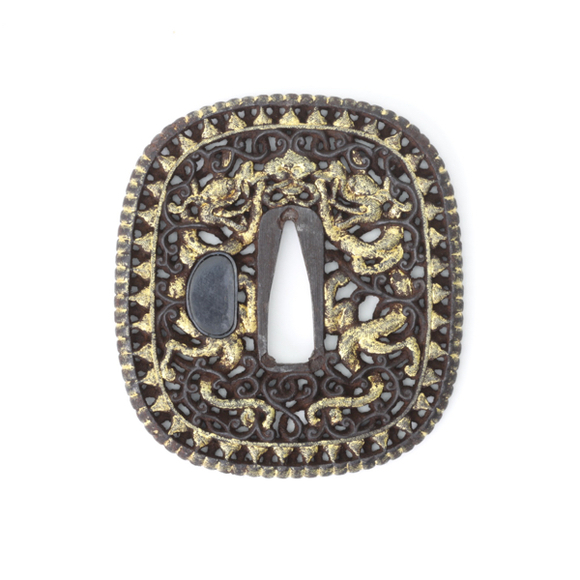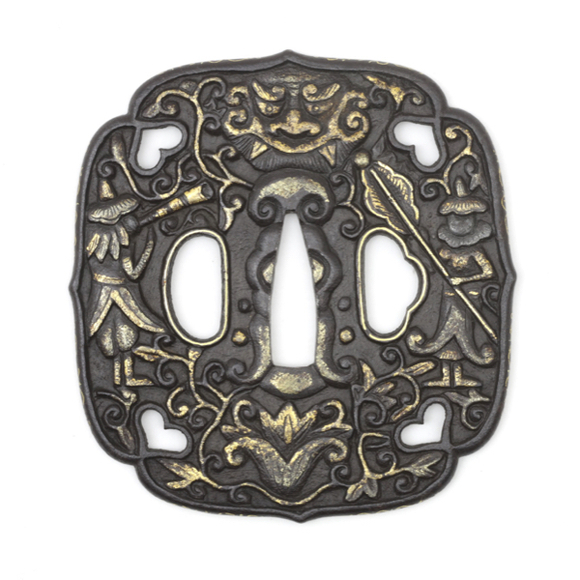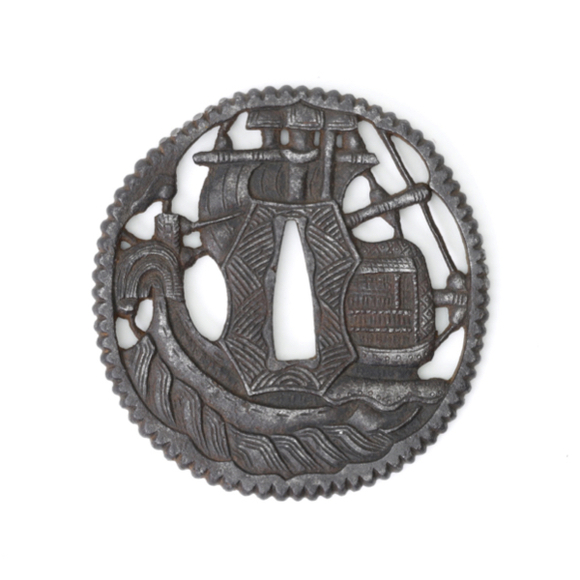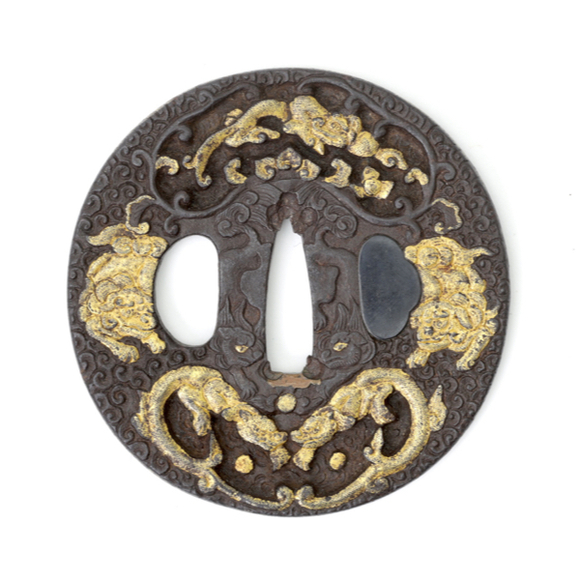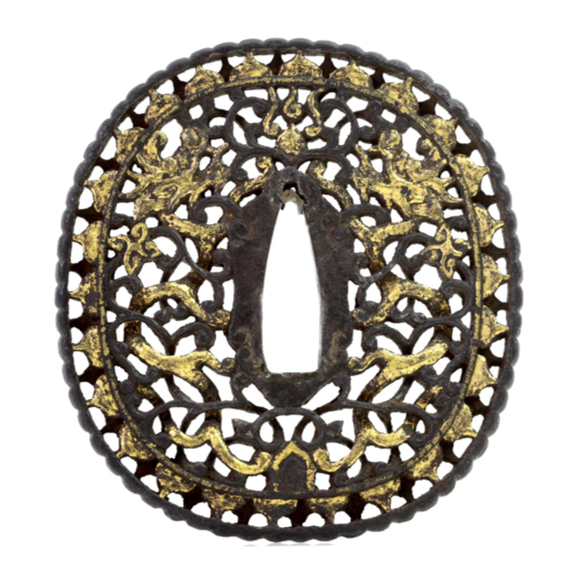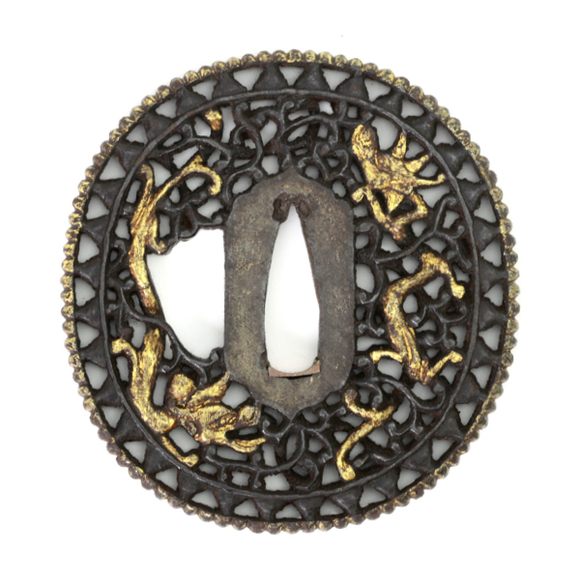Of pierced iron, elaborately cut with lotus petal border.

75 x 70 x 6.3 mm
131
Iron, gold, yellow metal alloy
Canton, China
For the Japanese market
17th - early 18th century
Introduction
Among Nanban tsuba there is a genre that is best described as "Asian export sword guards," and among those, there is a distinct group that was made in China, for the Japanese market. The production center was most likely Canton.
For more information, see my article: Nanban tsuba, a Canton group.
This example
Somewhat unusual among the group for having a more conventional shaped seppa-dai (area around the tang opening). in this case it is chiseled with designs of rolling clouds.
The openwork area is thicker, less focused on a multitude of round holes and its designs more flowing than what is normally seen. The tendrils themselves also have carved decoration. The whole is more skillful, more artistic than most. There are five areas of undercutting.
The design is a single, large dragon that creeps through the vines toward a sacred jewel, this time not cut loose from its surroundings but firmly embedded in the design. It has a ridged and beaded rim.
The hitsu-ana was opened at a later stage in Japan, and a yellow metal strip was added. Punch marks on the seppa-dai indicate it has been mounted.
I believe this is a rather early example of the Canton-made export tsuba, probably 17th to early 18th century.



Unusual tsuba with foreign figures and Chinese auspicious symbols.
In the style of northern work of the 16th and 17th centuries

